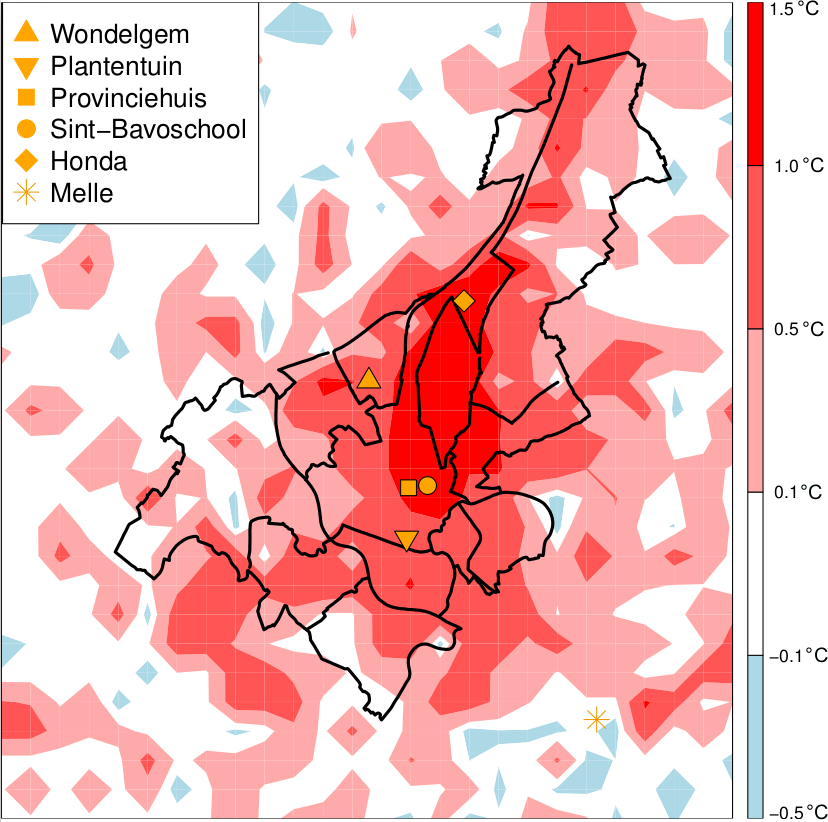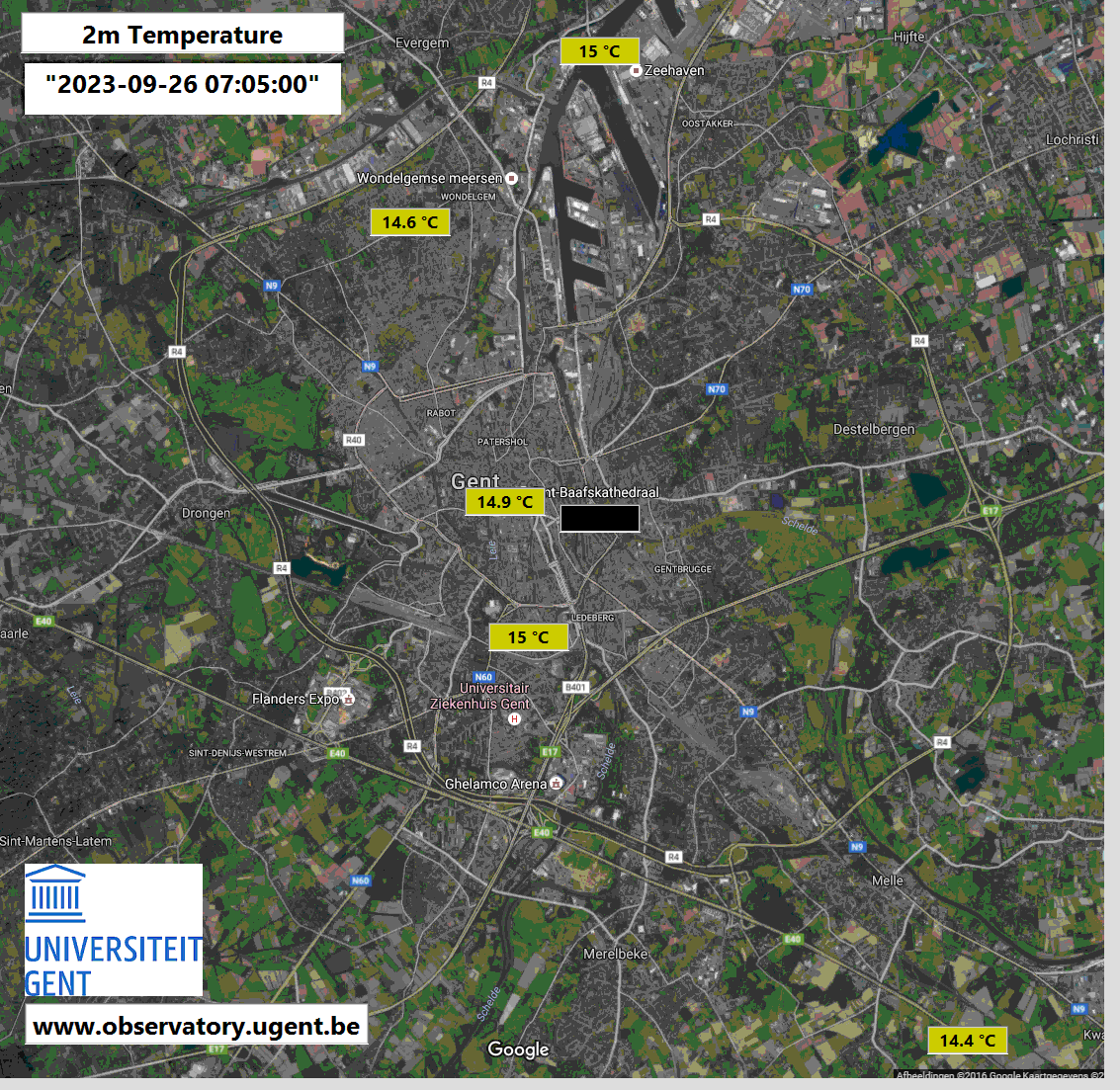Ghent's Urban Heat Island
Cities turn out to have an associated urban heat island, especially during clear and calm nights urban regions stay considerably
warmer than the surrounding countryside. This is explained by the fact that:
Higher temperatures in the city may sound tempting, but there are some drawbacks. Persisting warm periods lead to heat stress and may cause health problems, especially for vulnerable groups (e.g. elderly people). Heat waves are known to be responsible for more deaths than any other meteorological phenomenon. Due to the heat island effect extra attention is needed in urban regions for heat stress.
- built-up areas (e.g. parking lots) take up more heat than natural areas (e.g. meadow)
- 3D geometry of buildings trap the outgoing long wave radiation during night within the street canyon
- there is less moisture in the city. This means there will be less evaporation, an energy consuming process, and thereby more energy is left for heating the air over the city
- the wind speed is significantly lower over the city
- human activities (e.g. transportation) result in extra anthropogenic heat release
Higher temperatures in the city may sound tempting, but there are some drawbacks. Persisting warm periods lead to heat stress and may cause health problems, especially for vulnerable groups (e.g. elderly people). Heat waves are known to be responsible for more deaths than any other meteorological phenomenon. Due to the heat island effect extra attention is needed in urban regions for heat stress.

MOCCA network of weather stations

To study the geographical variability of the local climate in Ghent 6 automatic weather stations are installed in the city. All stations are identical and this is important to obtain reliable data. The locations are chosen such that different urban environments (e.g. port, park,...) can be compared with the surrounding countryside. The stations will stay for 3 years at their location.
Why is Ghent University undertaking the MOCCA project?
There are different motivations for setting-up this measurement network:
- the collected data will be used for scientific research
- students (both at university and secondary school level) will use these data for projects, thesis research, STEM courses,...
- the network will make citizens aware of the urban climate in their city
